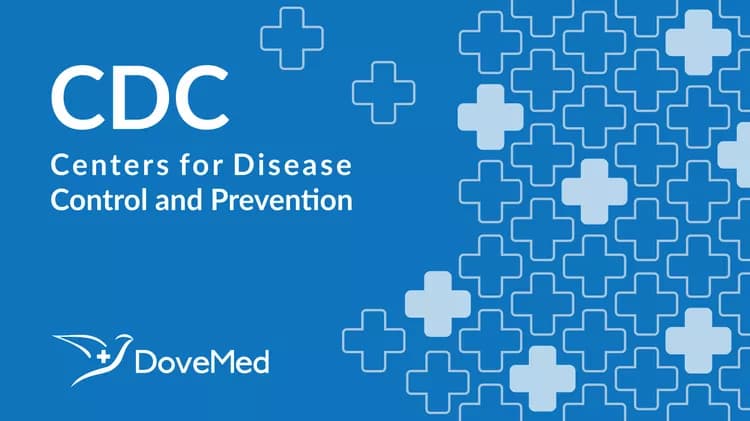
First National Summary Report Shows Magnitude of Injuries
First National Summary Report Shows
Magnitude of Injuries
Eighteen people die every hour from injuries in the U.S.
Eighteen people die every hour from injuries in America (or 157,000 people in 2001) spanning all age groups, both sexes and all races, according to the first national report for both fatal and nonfatal injuries released today by the Centers for Disease Control and Preventions (CDC).
Unintentional injury is the fifth leading cause of death in the U.S. and about one in every three people treated in an emergency department is treated for an injury. CDC researchers also noted that in 2001, an estimated 29.7 million persons, or one in 10 U.S. residents, were treated for nonfatal injuries in hospital emergency departments and 1.6 million were hospitalized or transferred for specialized medical care. Traumatic brain injuries are a leading cause of injury deaths, accounting for about 50,000 deaths each year. More than 1.2 million cases of traumatic brain injuries were treated in 2001.
All of this brings a substantial price tag to U.S. residents – costing an estimated $117 billion in medical care costs annually.
Whether driving or riding in a car, participating in sports and recreation activities, working, or merely doing chores around the house, people can find ways to reduce their risk of injury. Efforts such as wearing a safety belt, not drinking and driving, using safety gear during sports activities, removing hazards in the home that might cause a fall, and learning peaceful ways to resolve conflicts can help reduce the risk of injury.
Key findings in this report for 2001 are:
All Ages
Overall, fatal and nonfatal injuries were higher for males than females and disproportionately affect younger and older persons. Overall, the leading cause of injury death was motor-vehicle traffic crashes and the leading cause of nonfatal injuries treated in hospital emergency departments was unintentional falls.
Motor-vehicle traffic crashes accounted for more than 2.9 million nonfatal occupant injuries treated in hospital emergency departments and almost 33,400 occupant deaths. The motor-vehicle traffic occupant death rate for males was almost twice that of females and the rate was highest for those ages 15 to 24 years.
In 2001, unintentional falls accounted for more than 7.8 million nonfatal injuries treated in hospital emergency departments and more than 15,000 deaths. The unintentional fall nonfatal injury rate for females was higher than that for males and the rate was highest for those ages 75 years and older.
Violence-related injuries also take a toll on Americans. In 2001, almost 21,000 homicides and 31,000 suicides occurred; and almost 1.8 million people were assaulted, while about 323,000 harmed themselves and were treated in hospital emergency departments.
Children 14 years or younger
For children ages one to four years, drowning ranked first above motor-vehicle occupants killed in traffic crashes, accounting for over one out of four unintentional injury deaths.
Children ages 14 years and younger suffered almost 450,000 traumatic brain injuries, representing 36% of more than 1.2 million traumatic brain injuries treated among injured persons of all ages.
Teenagers and Young Adults ages 15 to 24 years
The motor vehicle traffic occupant death rate was highest for those ages 15 to 24 year.
Males ages 20 to 24 years had the highest homicide rate and the highest nonfatal assault rate compared to all other ages and more than 80% of homicides were firearm-related.
For persons ages 15 to 24 years, poisoning accounted for 63% of nonfatal self-harm injuries treated in hospital emergency departments.
Adults ages 65 years or older
For adults 65 years or older, fall-related injuries accounted for 62% of unintentional injuries treated in U.S. hospital emergency departments. The fall death rate for persons ages 75 years and older is over five times higher than that of any other age group.
Persons ages 75 years and older had the highest suicide rate compared to all other age groups.
This summary uses 2001 national data to examine injury deaths and nonfatal injuries by cause and intent of injury, age, and sex; nonfatal injuries also are presented by primary body part affected and type of injury. The ten leading causes of injury death and nonfatal injury are ranked by age groups for males and females. It does not provide data on injuries and injury deaths by state.
EDITORS NOTE: Some numbers are rounded. For specific data, please link to the Surveillance Study at: http://www.cdc.gov/mmwr/preview/mmwrhtml/ss5307a1.htm. This report is based on 2001 data from two national data sources. Death data are from the National Vital Statistics System operated by CDC’s National Center for Health Statistics. Nonfatal injury data are from the National Electronic Injury Surveillance System All Injury Program operated by the U.S. Consumer Product Safety Commission in collaboration with the National Center for Injury Prevention and Control, CDC. Other national data sources for injuries are available. For instance, National Highway Traffic Safety Administration tracks motor vehicle crash-related deaths and has recently released 2003 data for motor-vehicle traffic deaths. Their counts may differ somewhat from the estimates in this report because the data represent different years and come from different sources.
Related Articles
Test Your Knowledge
Asked by users
Related Centers
Related Specialties
Related Physicians
Related Procedures
Related Resources
Join DoveHubs
and connect with fellow professionals

0 Comments
Please log in to post a comment.